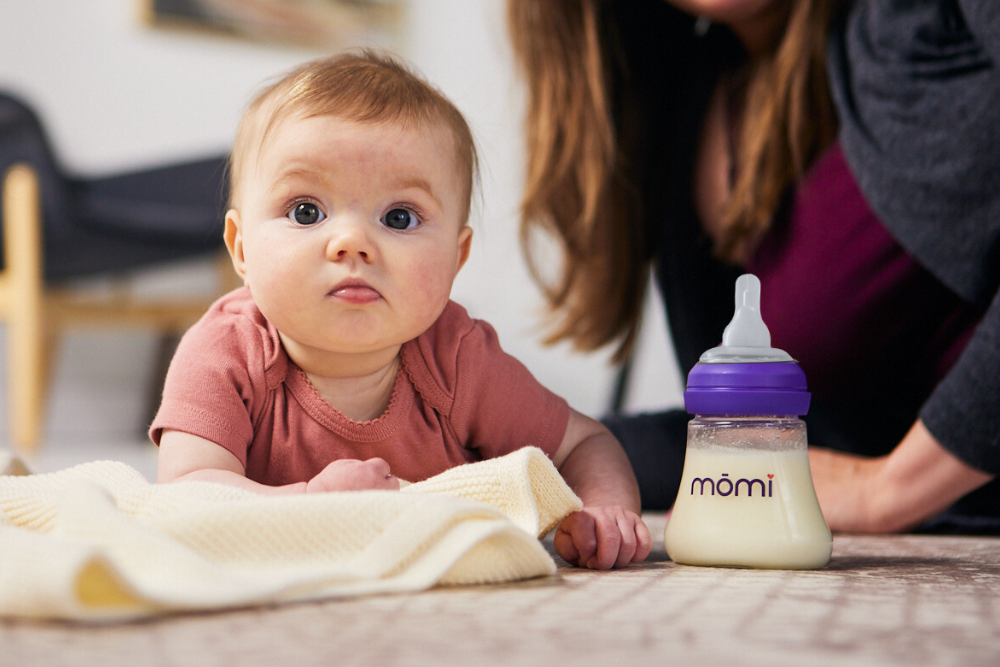As an IBCLC deeply committed to supporting breastfeeding mothers and infants, I've come to appreciate the intricate interplay between breastfeeding dynamics and the tools we use to facilitate them. In particular, the introduction of a bottle holds significant implications for preserving and protecting the breastfeeding relationship, something I've explored extensively in my practice.
When mothers seek my guidance on introducing bottles to their breastfed babies, they do so with a desire to maintain the integrity of their breastfeeding journey. Their need to occasionally bottle feed should not compromise the breastfeeding dynamic they've worked hard to establish. This is where I have found the mōmi bottle comes into play.
For many mothers I have worked with, the mōmi bottle has become a tool that integrates bottle feeding into their breastfeeding routine. They recognize the value of investing in a bottle that aligns with their breastfeeding goals, in order to guard the delicate balance they've achieved. With its emphasis on “working like a mom,” (offering the baby the chance to work the way they do at the breast) this bottle serves as a bridge between breast and bottle feeding without compromising the needs of mother or baby.
Babies, by nature, are inclined to feed as efficiently as possible, often seeking the path of least resistance (which may be in direct conflict with their mother's breastfeeding goals). This innate behavior underscores the importance of providing infants with feeding tools that require baby to actively feed as they do in nursing. The mōmi bottle's design, which encourages natural oral mechanics, helps redirect babies towards optimal feeding behaviors while safeguarding the breastfeeding relationship.
So many breastfeeding mothers rely on at least the occasional bottle feed. To ensure these bottle feeds don’t disrupt breastfeeding, it’s vital to understand compensatory growth pathways. I share this example: When I broke my ankle, my doctor offered a boot to stabilize the bones. In my eight weeks wearing the boot, I was able to get around and gradually learned to walk with the boot. When it came off, however, my foot was completely out of alignment. I needed physical therapy to address the ways I had learned to compensate for the boot. Babies have a remarkable ability to adapt to the tools we use to feed them, sometimes at the expense of optimal alignment and function. When infants are introduced to feeding methods that deviate from the natural breastfeeding process, they may inadvertently enter into compensatory growth pathways that could impact their long-term health and development. Even for mothers who may not be breastfeeding, promoting healthy oral and facial function remains paramount. Just as babies are designed to feed in a certain way, they also possess remarkable adaptability. It's our responsibility to ensure that this adaptability does not lead to compromised growth and development in the long run.
In my work as an IBCLC, I am committed to nurturing healthy breastfeeding relationships and promoting optimal infant development. By choosing bottles that prioritize physiological compatibility and mimic the breastfeeding experience, we can empower mothers to navigate their breastfeeding journey with confidence, knowing that their choices are aligned with the best interests of both themselves and their infants.




